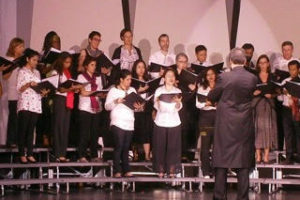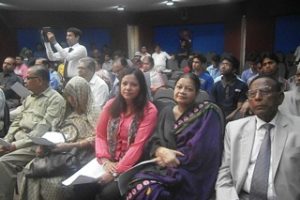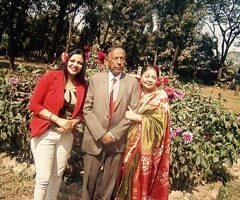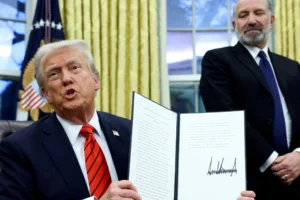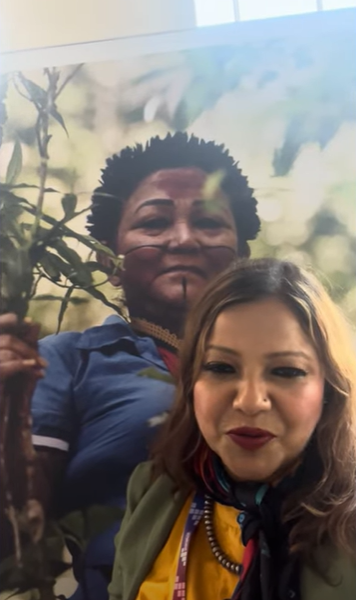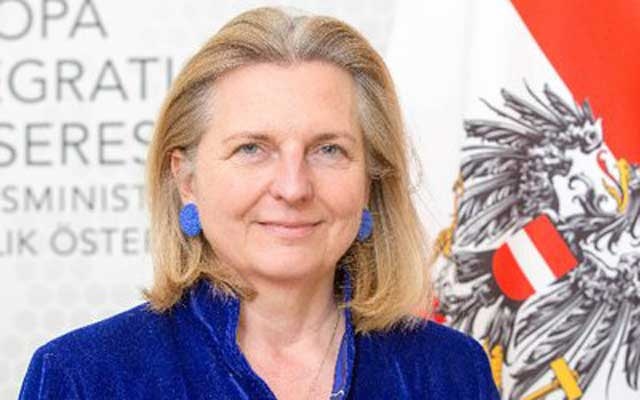President Donald Trump says he wants the United States “raring to go” in 2 1/2 weeks, on Easter, with “packed churches all over our country.” He and many other political conservatives suggest that we are responding to something like the flu with remedies that may be more devastating than the disease.
We created an interactive model with epidemiologists to show why returning to normal quickly could be a historic mistake that would lead to an explosion of infections, hospitalizations and deaths.
Instead, health experts advise giving current business closures and social distancing a month to slow the pandemic, buying time to roll out mass testing and equip doctors with protective equipment. Then, depending on where we are, we can think about easing up — while prepared for a new burst of infections that will then require a new clampdown.
“Anyone advising the end of social distancing now needs to fully understand what the country will look like if we do that,” cautioned Dr Tom Inglesby, a health security expert at Johns Hopkins University. “COVID would spread widely, rapidly, terribly, and could kill potentially millions in the year ahead, with huge social and economic impact.”
Social distancing may delay an outbreak more than prevent it, but it is beneficial in two ways.
First, we can use the time to buttress hospitals and test treatments. Second, interventions can flatten the curve and spread infections over a longer time so that the health care system does not become overwhelmed.
Whatever we do, the pain of both disease and business and school closures may be enormous. During the Great Depression, the jobless rate reached 25%; today, the president of the Federal Reserve Bank of St Louis, James Bullard, warns that it might reach 30%. People may lose their jobs, savings and homes; they will go without parties, weddings, funerals and graduations that give life connectedness and meaning.
But we know quite a bit about how to ease economic pain: We can send out checks to individuals, and we can incentivise companies to keep workers on the payrolls. Both steps are part of legislation being considered in Washington.
Some prominent conservatives have suggested that it is worth sacrificing some elderly people to keep the economy moving. “I’d rather die than kill the country,” Glenn Beck told viewers.
But that view reflects two fallacies. First, the fundamental force damaging the economy is not the rule book on social distancing but rather an out-of-control virus, and the best way to protect the economy is to rein in the pandemic. Second, while these critics speak nobly about sacrificing themselves, the policies they advocate would more likely lead to the deaths of many other people who are older and in poorer shape.
It is a false choice to say that we must accept the deaths of senior citizens to keep small businesses going. And any easing of social distancing should be based on data.
Dr Larry Brilliant, an epidemiologist who is a veteran of the eradication of smallpox and now chairman of an organisation called Ending Pandemics, warned that if Trump sends everyone back to work by Easter, “I think history would judge it an error of epic proportions.”
Brilliant said that the entire country probably does not need to be shut down but that we need widespread testing to determine which areas are at risk and which are not. We also desperately need blood testing to determine who has had the disease and is now immune.
If COVID-19 is as fearsome as some believe, our model suggests a grim possibility: It may be that the only way to control it sustainably is with an economic pause too long to be politically sustainable. In that case, we may be headed for a year of alternating periods of easing and tightening economic activity, with the pandemic rising whenever we ease and subsiding whenever we tighten.
Dr David Fisman, a University of Toronto epidemiologist who helped us build this model, suggests that for the next year we may have to tighten social distancing whenever intensive care unit capacity is stretched, and then loosen it when the situation improves. “This gives the economy and the population ‘breaks’ so that people can breathe and businesses can operate,” Fisman said.
There are some hopeful signs that social distancing and business closures can turn the tide, and not just in South Korea and Singapore. In Italy, confirmed new cases have started to drop. And the number of positive test results conducted by the University of Washington, in hard-hit Seattle has stabilized.
Trump seems to be pushing for a relaxation of restrictions partly based on his repeated comparisons of COVID-19 to the flu, warning that “we cannot let the cure be worse than the problem itself.” Meanwhile, Fox News medical correspondent Dr Marc Siegel scoffed this month about the coronavirus: “Worst-case scenario, it could be the flu.”
Modelling the virus underscores why epidemiologists emphasise that this is not the flu and why we should not expect a return to normal within weeks.
One gauge of a virus is how contagious it is. The flu has an infectiousness measure (or R0) of only about 1.5, meaning that each sick person infects on average 1.5 others. In contrast, COVID-19 without social distancing appears to have an R0 of perhaps 2.5.
A second gauge of a virus is how often infected people must be hospitalized. With the seasonal flu that’s roughly 1%; with the coronavirus, estimates range from 5% to 20%.
A higher R0 and higher hospitalisation rate conspire to wreak havoc. A single person with the flu can result in the infections of 386 other people over two months, and a handful would be hospitalised. But in that same period one COVID-19 patient could lead to the infections of 99,000 people, of whom nearly 20,000 might need to be hospitalised.
A third measure is lethality, the “case fatality rate,” or percentage of people who contract an illness who eventually die of it. For the flu, this is about 0.1%. For COVID-19, there are enormous uncertainties but even in optimal circumstances it may be 10 times greater, roughly 1% — although it has been much higher than that in countries like Italy with older populations and overburdened hospitals.
We asked Dr Tara Smith, an epidemiologist at Kent State University, what she would advise a bride and groom whose long-planned wedding is imminent, especially if they can’t afford to reschedule. “They should think about putting other people at risk,” she said, “and what would they think if there was an outbreak because of something happy like a wedding.”
These are not questions we wrestle with each flu season.
We’re living through an extraordinary time, forced to make difficult trade-offs with uncertain information — and one lesson of past pandemics is that early “knowledge” of diseases is often wrong. Yet another lesson of history is the value of responding to pandemics early and firmly. In the 1918 flu pandemic, cities like St Louis that acted decisively saved many lives. In this crisis, parts of the world like South Korea and Taiwan that acted resolutely have managed far better than those that were more relaxed, like Italy, Iran and the United States.
That’s why epidemiologists and public health experts warn against relaxing too soon. Dr Peter Hotez, a global health expert at Baylor College of Medicine, calls for maintaining controls for at least another month and then reassessing.
Life is about making difficult decisions in the context of uncertainty, and we hope our model will help you appreciate the trade-offs — and the significance of sustained efforts for social distancing not only by the president but also by each of us in our own lives.





